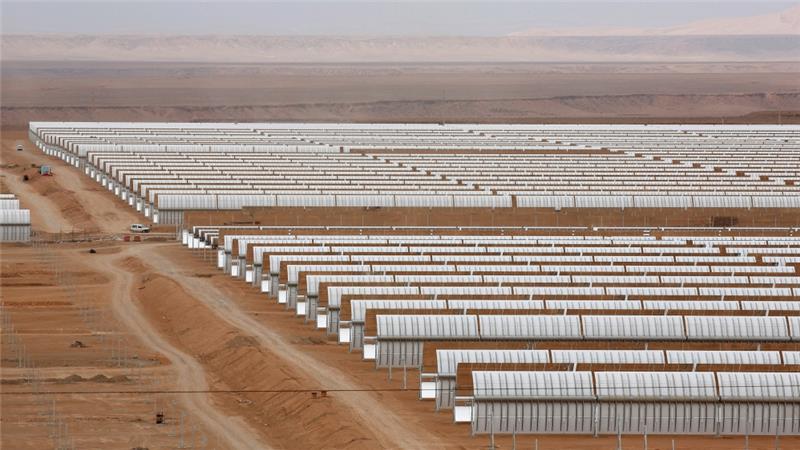Morocco’s aeronautics sector represents $1bn of exports and employs 9,000 people. How can the country maximise its potential?
The sector has grown rapidly from less than a dozen firms to now seeing over 100 international companies operating in the country. Bolstered by a welcoming tax and regulatory climate, the industry enjoys high growth rates of around 15% annually and represents $1bn, or 5%, of Morocco’s total exports.
Although the ‘Arab Spring’ destabilised many governments in the region, Morocco proved resilient to political turmoil, leading aeronautics firms to increase investment in the Kingdom. Last week Morocco signed a major deal with Boeing to create an ecosystem that could attract 120 suppliers, boost aeronautics exports by $1bn and create almost 9,000 jobs, with the ‘Boeing ecosystem’ impact being felt across the country.
“The Boeing ecosystem is of great value for many reasons, especially in that it will attract other players to follow suit,” says Jean AbiNader, Executive Director of the Moroccan American Trade and Investment Center. “But it’s not only Morocco’s aeronautics industry that benefits, with Bombardier recently announcing that it was moving its cluster for railroad production to Morocco. Aeronautics is the leader and thus has a key voice in building stronger supplier networks.”
The aeronautics industry in Morocco is already home to some of the world’s leading aerospace manufacturers. Matis, a joint venture between Boeing and Safran, employs over 1,000 workers and exported €70m worth of products in 2015, with Boeing also relocating more jobs from Northern Ireland to Morocco earlier this year. Bombardier has plans to invest close to $200m by 2020 in the tax-free Midparc zone and French firm Daher is on track to open its third plant in Morocco in 2017, at a cost of more than $16m.
Skills gap
The creation of the Midparc Casablanca free zone, located close to the Mohammed V International Airport and offering complete tax exemption for companies during the first five years of operation, has brought in many companies and helped build up a burgeoning industry, but if the sector is to double in size by 2020 as hoped, a well-trained workforce is vital.
For example, the Moroccan machinists at Baccarat Precision, a French aerospace contractor, needed far more training to construct complex cylinders than their French counterparts, according to a 2012 Wall Street Journal report. Errors caused by the Moroccan workers caused a rejection rate for the cylinders to be much higher than the 2% target, leading to unprofitability for the manufacturer.
In response to the skills gap shortage, a number of new institutions have opened to specially cater to the needs of the aerospace sector. “The industries have already come up with a solution, and that is public-private partnerships that have industry and government collaborating in curriculum development and training across all technical specialties,” says AbiNader. He also believes that Moroccans have now proven they are able to quickly and effectively absorb technical training because of new a planning and delivery systems that have been implemented.
Trading partners
Morocco’s King Mohammed VI has undertaken a wide-ranging reform programme since coming into power in 1999, with the Arab Spring driving forward further democratic changes. A raft of free trade agreements with the US, European Union and several Arab countries has also played a central role in developing the industry.
The unrestricted free trade with the EU may have contributed to the industry’s success, but there are concerns that there has been too high a focus placed on attracting EU firms. According to some reports, up to 90% of foreign aerospace companies are French, although in recent years this figure has fallen somewhat as American businesses set up in the country.
A broader base of businesses will not only help to increase competition but it would also lessen the impact of stagnating growth in EU states, which could lead to a drop in investment and demand. Additional work by Morocco’s government is required to promote the country’s aeronautics industry in North America, with both the US and Canada being strong potential trading partners.
The North African country still has key challenges to overcome which could impact the long-term viability of the aerospace industry. This includes ballooning national debt, high levels of unemployment and faltering growth rates. It is essential that Morocco maintains an investment-friendly business environment if major multinationals are going to continue investing in the country.
While Morocco’s aeronautics industry is going from strength to strength, the rise of Tunisia, Turkey and Malaysia as low-cost competitors cannot be understated. However, as AbiNader says, competition is about more than just salaries.
“It’s also about competencies, adequate supplies, labour regulations, and quality, and on all of these criteria and more, Morocco holds its own and is better situated geographically to access its target markets without competition from South Asia or Latin America,” says AbiNader.
Source: Morocco’s aeronautics sector taking off – African Business Magazine














